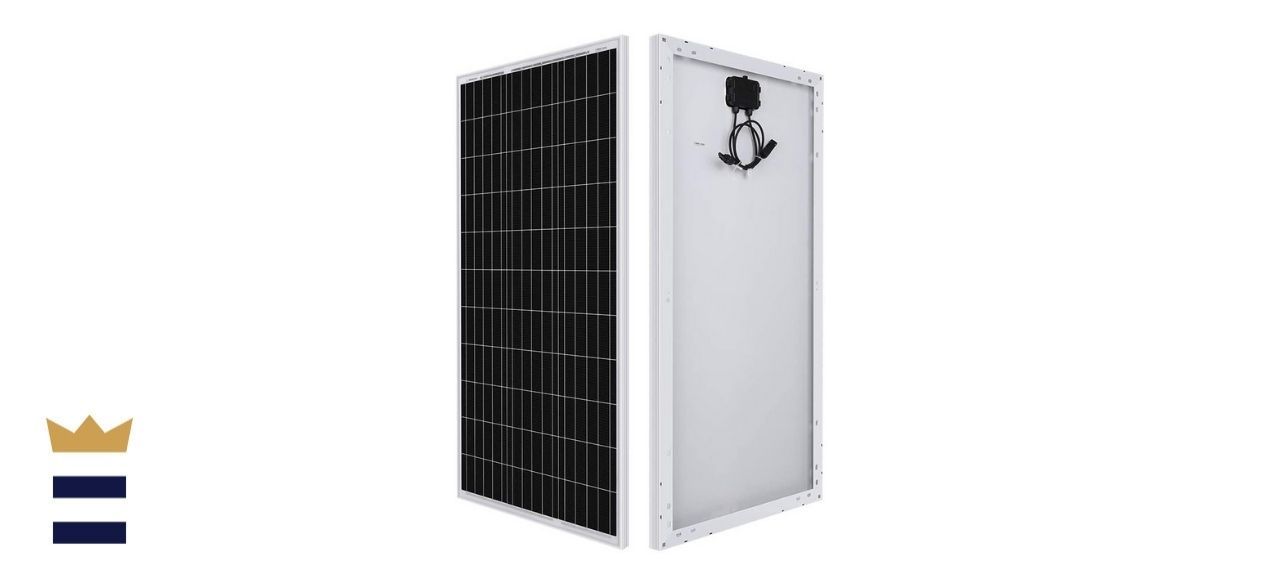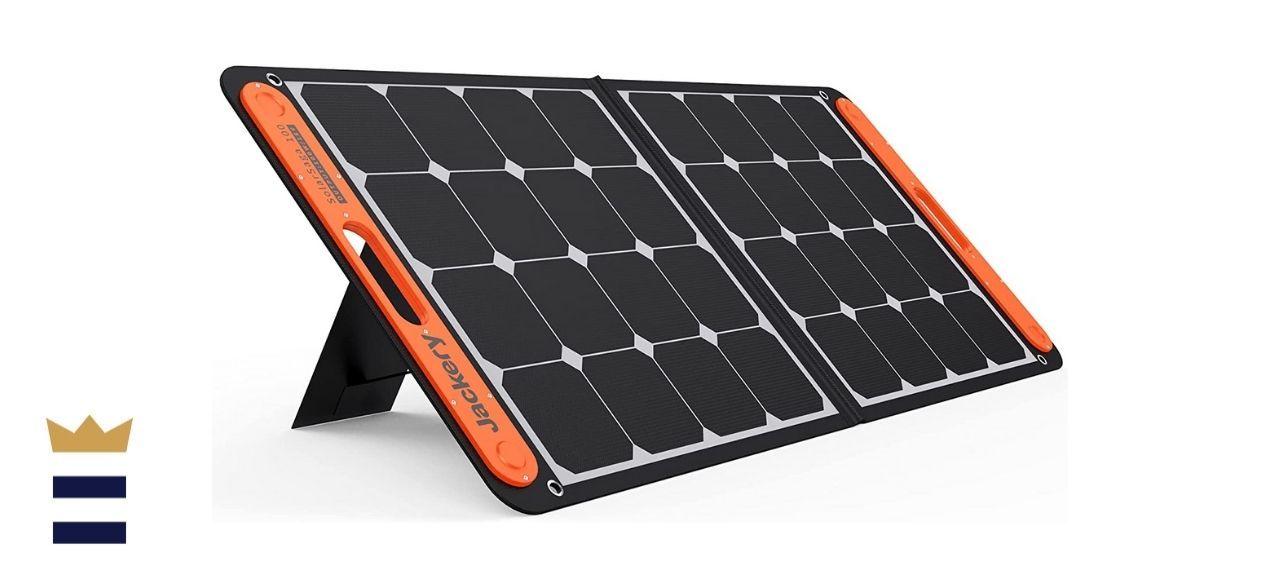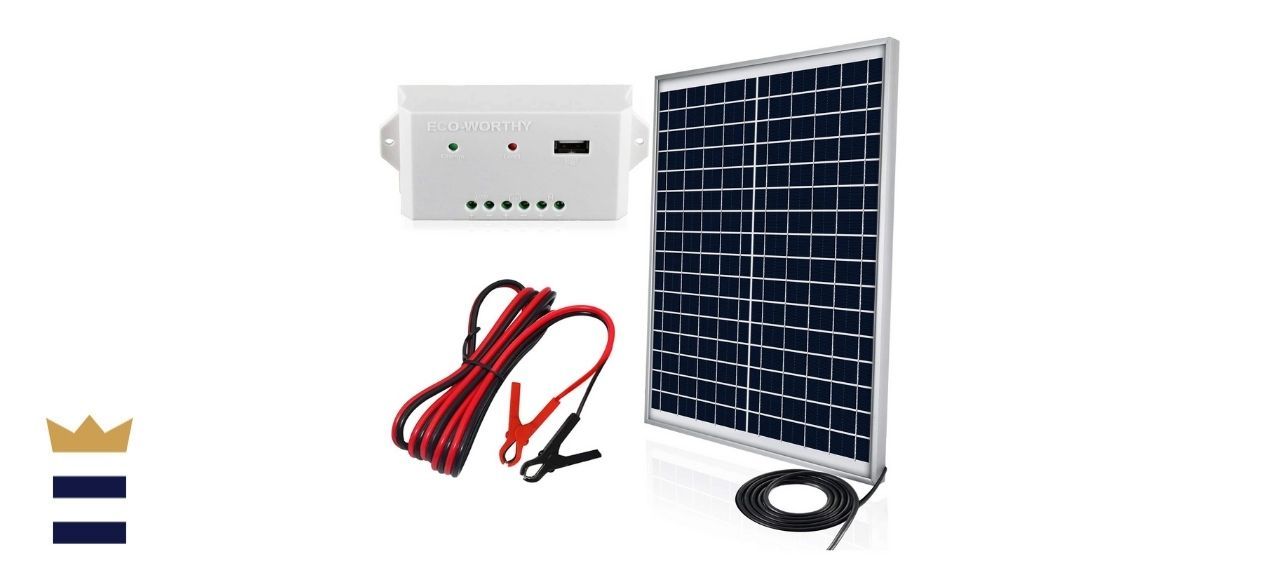Which solar panel is best?
Solar panels aren’t just for forward-thinking homeowners or businesses. You can now purchase portable panels for personal uses like charging your phone or on camping trips to recharge batteries. The use of solar energy not only radically cuts down on pollution, it’s also totally free after a one-time investment in a solar panel or two. All they require is sun to provide free electricity for whatever you want to power, whether that means covering your roof in panels or charging your USB devices.
We’re here to help demystify solar panels and make them accessible to shoppers in our guide. We’ve also included our recommendations, including our top pick by Renogy that delivers great wattage for a price that won’t break the bank.
What to know before you buy a solar panel
Though solar power was discovered in the 1800s by a scientist who found that some materials produce a small, electrical current when exposed to the sun (a quality called photovoltaic), the technology has advanced in recent years. There are now three different types of solar panels available:
- Monocrystalline: This type of panel is made from high-grade silicon. You may be familiar with their appearance — flat, thin black panels with corners that are rounded. These panels offer the greatest efficiency and longevity. They do well in temps up to 77℉ but begin to lose efficiency in higher temperatures. These panels can also be costly.
- Polycrystalline: Made from square-shaped silicon, these solar panels often have a crystalline appearance. They are more affordable than monocrystalline, but not as efficient or long-lasting. The manufacture of this type of panel is less wasteful, making them a more budget- and eco-friendly choice.
- Thin-film: These panels are constructed by layering different types of photovoltaic materials that can convert sun into electrical current. These aren’t as readily available to consumers, though they are fast-advancing technology. The benefits of thin film panels are that they’re lightweight and flexible. They are highly adaptable, and their performance isn’t as impacted by shade or heat. However, they are less efficient than poly- and monocrystalline panels. They also require more space.
Uses of solar panels
Solar panels have many uses, such as powering your smartphone or tablet or recharging larger batteries (12 to 48 volts) for camping. Anything with a USB port can be charged by solar panels; so can most appliances, up to the size of a mini fridge. You can also connect them and cover your roof with them to live free of electricity bills.
How much you can expect to spend on a solar panel
A monocrystalline solar panel (100W) ranges in price from $105-$170. A polycrystalline solar panel (100W) costs between $99-$104. A thin film solar panel (100W) runs between $160-$190.
Solar panel FAQ
Q. In what conditions do solar panels work best?
A. Solar panels work best in direct sunlight. However, they will still work in indirect sunlight or on cloudy days or even rainy days, they just won’t be as efficient. Some types of panels, like monocrystalline, can stop functioning if partly covered by shade, snow, or debris. For improved efficiency and to capture optimal sunlight, face your solar panels south. They work best in 77℉ and under. Cold doesn’t impair their functionality, but heat does.
Q. How long will my solar panel last?
A. One of the beauties of solar panels is that they contain no parts that could wear out or need upkeep. Still, due to forces of nature, a solar panel loses some efficacy (up to about one percent) each year. Most panels last at least 20 years, but when they drop to 80% efficacy, you may want to start searching for a new one.
What are the best solar panels to buy?
Top solar panels
Renogy 100-Watt Monocrystalline Solar Panel
Our take: A versatile panel that can be used solo or in an arrangement of panels.
What we like: Can be configured with other panels for increased power. Offers good wattage for its price.
What we dislike: Occasional complaints about power output.
Where to buy: Sold by Amazon
Top solar panels for the money
Jackery SolarSaga 100W Portable Solar Panel
Our take: A great panel for camping trips and for charging multiple devices.
What we like: Inexpensive. Folds away when not in use inside a protective case. Works well on partly cloudy days.
What we dislike: A few issues with the unit getting very hot.
Where to buy: Sold by Amazon
Worth checking out
Eco-Worthy 20-Watt Solar Panel Kit
Our take: Reliable, small solar panel with a sturdy build.
What we like: Well-built, and the frame does a good job protecting the unit. Great for charging batteries and outdoor fountains and lights.
What we dislike: Charge controller can be temperamental.
Where to buy: Sold by Amazon
Sign up here to receive the BestReviews weekly newsletter for useful advice on new products and noteworthy deals.
Ana Sanchez writes for BestReviews. BestReviews has helped millions of consumers simplify their purchasing decisions, saving them time and money.
Copyright 2021 BestReviews, a Nexstar company. All rights reserved.




